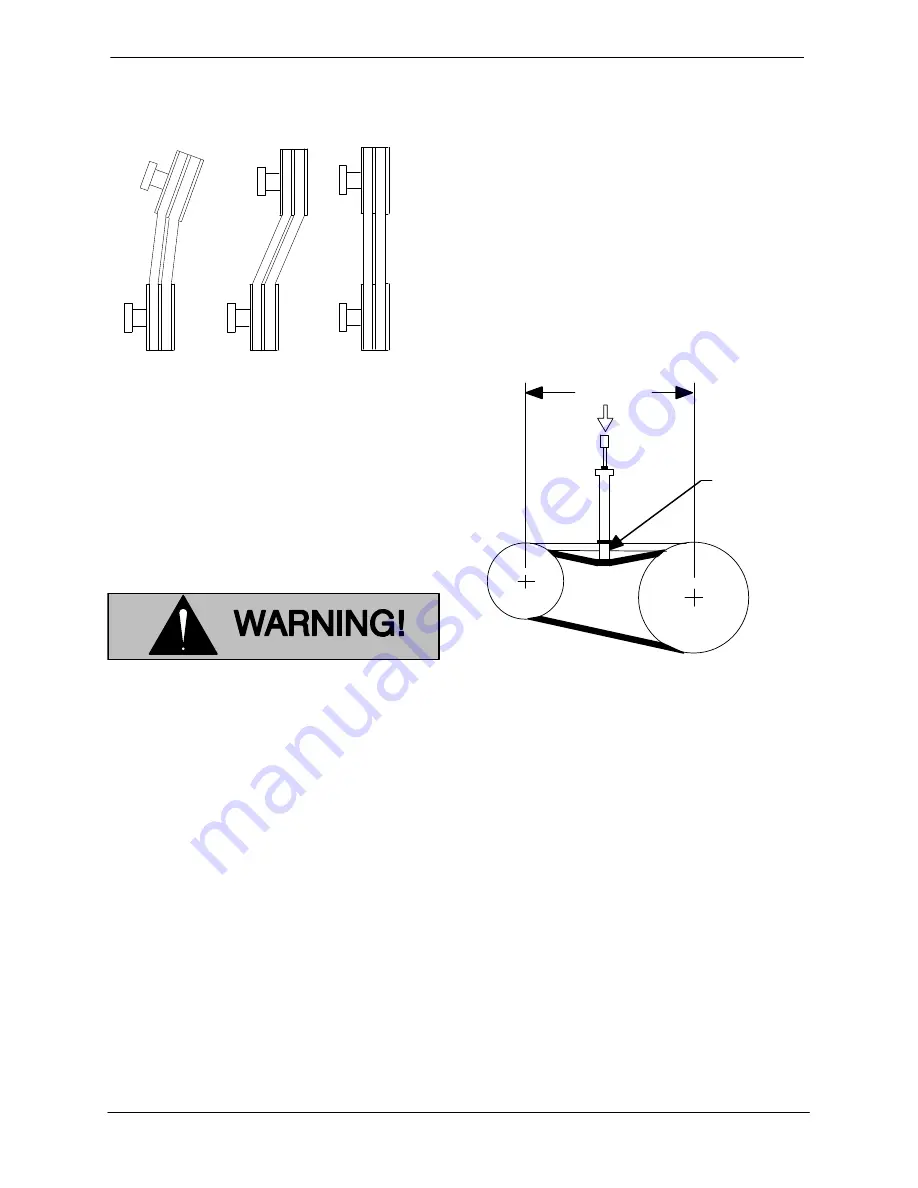
OM−00974
80 SERIES
PAGE B − 6
INSTALLATION
the belts are a matched set; unmatched sets will
cause accelerated belt wear.
MISALIGNED:
SHAFTS
NOT PARALLEL
MISALIGNED:
SHAFTS
NOT IN LINE
ALIGNED: SHAFTS
PARALLEL AND
SHEAVES IN LINE
Figure 3C. Alignment of V-Belt Driven Pumps
Tighten the belts in accordance with the belt manu-
facturer’s instructions. If the belts are too loose,
they will slip; if the belts are too tight, there will be
excessive power loss and possible bearing failure.
Select pulleys that will match the proper speed ra-
tio; overspeeding the pump may damage both
pump and power source.
Do not operate the pump without the
shields and/or guards in place over the
drive shaft, belts, and/or couplings, or
other rotating parts. Exposed rotating
parts can catch clothing, fingers, or
tools, causing severe injury to person-
nel.
V-BELT TENSIONING
General Rules of Tensioning
For new v-belts, check the tension after 5, 20 and
50 hours of operation and re-tension as required
(see the following procedure for measuring belt
tension). Thereafter, check and re-tension if re-
quired monthly or at 500 hour intervals, whichever
comes first.
Ideal v-belt tension is the
lowest
tension at which
the belt will not slip under peak load conditions. Do
not over-tension v-belts. Over-tensioning will short-
en both v-belt and bearing life. Under-tensioning
will cause belt slippage. Always keep belts free
from dirt, grease, oil and other foreign material
which may cause slippage.
Tension Measurement
Correct v-belt tension can be achieved using a v-
belt tension tester and Table 1 or 2. Use the tables
to find the v-belt size (cross-section), the smallest
sheave diameter, the belt type for your application.
The corresponding deflection force required for
new or used belts is shown opposite the RPM
range of the pump.
Belt Span
Deflection
Figure 4. Belt Tension Measurement
The ratio of deflection to belt span is 1:64 for both
ASA and metric units. Therefore, a belt with a span
of 64 inches would require a deflection of 1 inch at
the force shown on the Tables for your particular
application.
For example, if the span as measured in Figure 4 is
32 inches (813 mm), the v-belt cross-section is C,
the smallest sheave diameter is 8 inches, the pump
speed is 1250 RPM, and the belts are uncogged
Yy-T type, then 11.5 lbs. of force on the tensioner
should show 1/2-inch (12,7 mm) of deflection.
A tension tester is available as an option from Gor-
man-Rupp (P/N 29513−001). Other tension test-
ers are available from your local belt/sheave dis-
tributor, and work on a similar principal.
To use the Gorman-Rupp tensioner, measure the
belt span as shown in Figure 4. Position the bottom
of the large O-ring on the span scale of the tension-














































